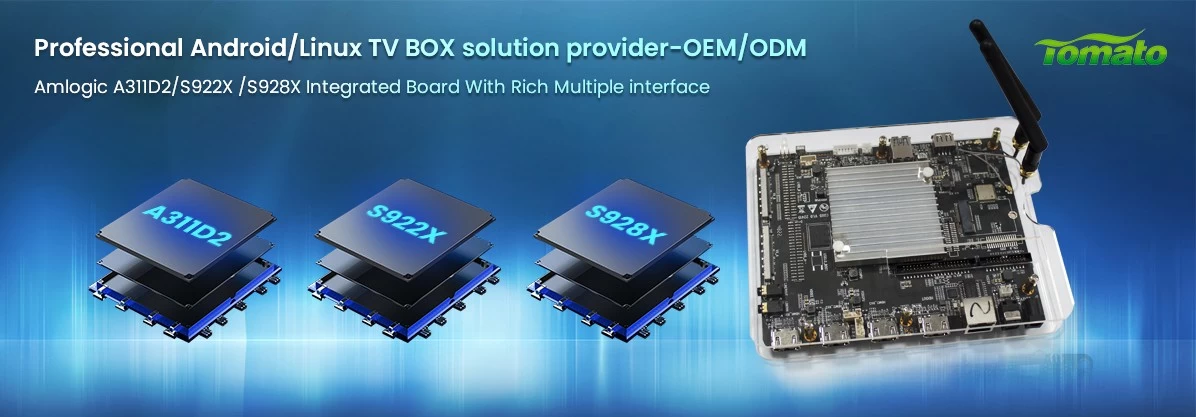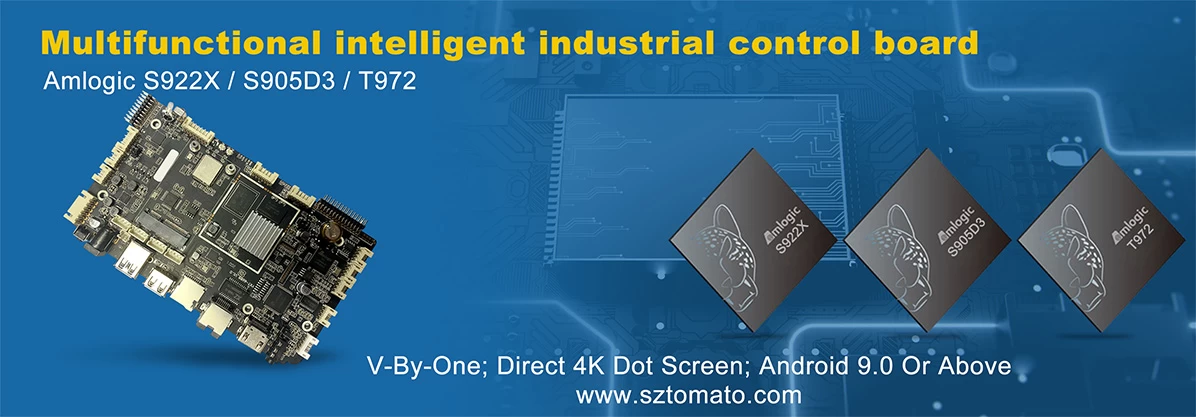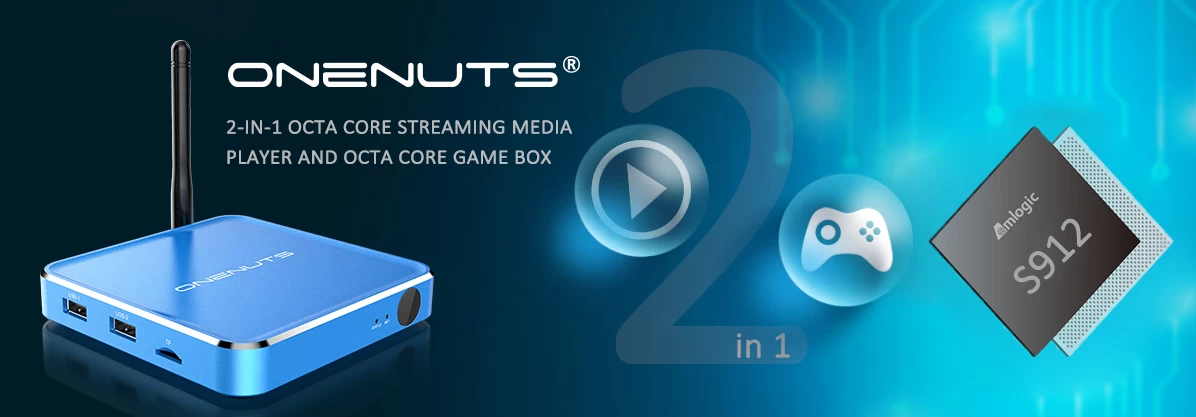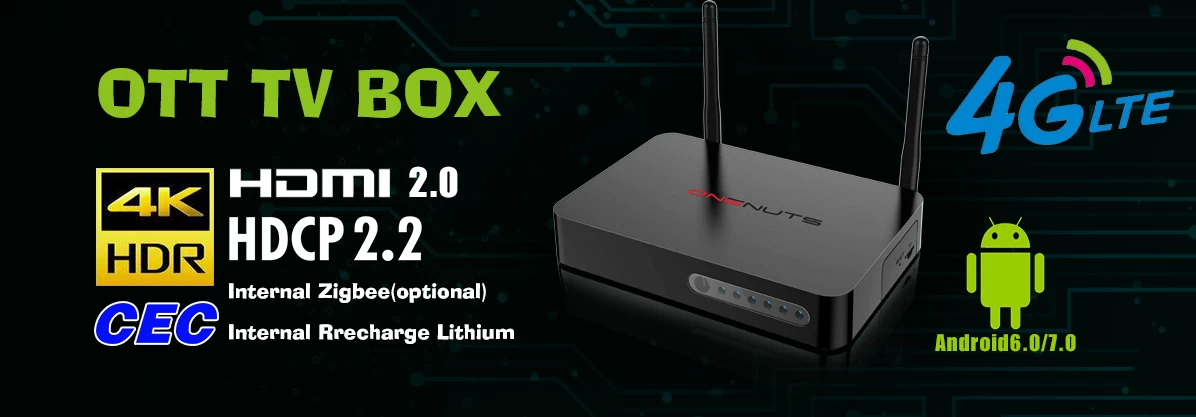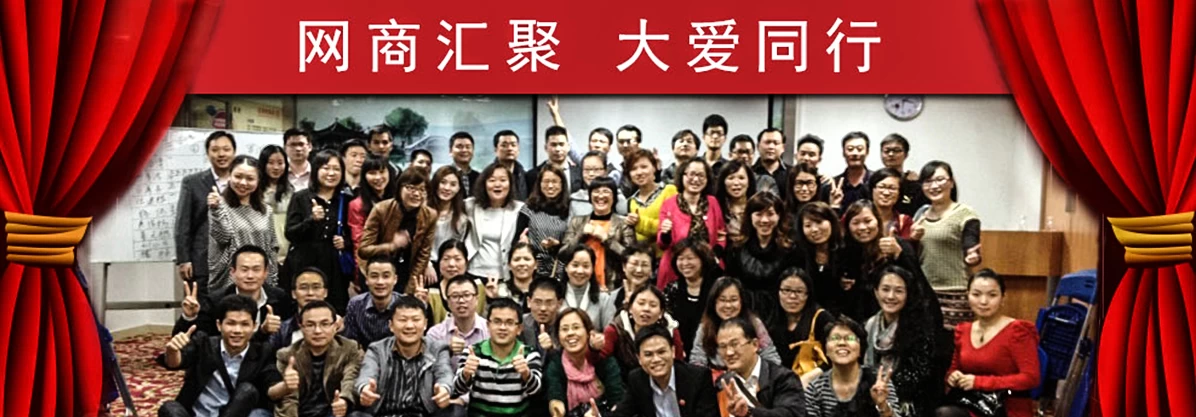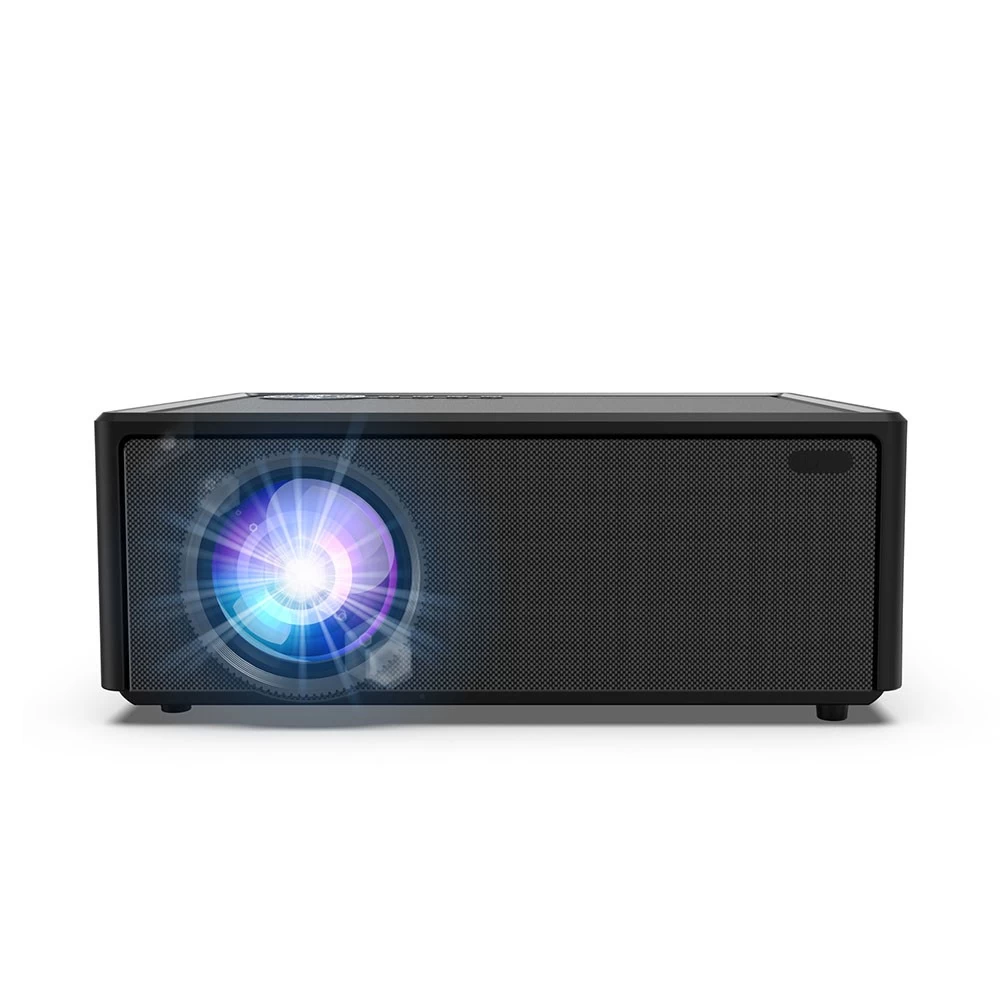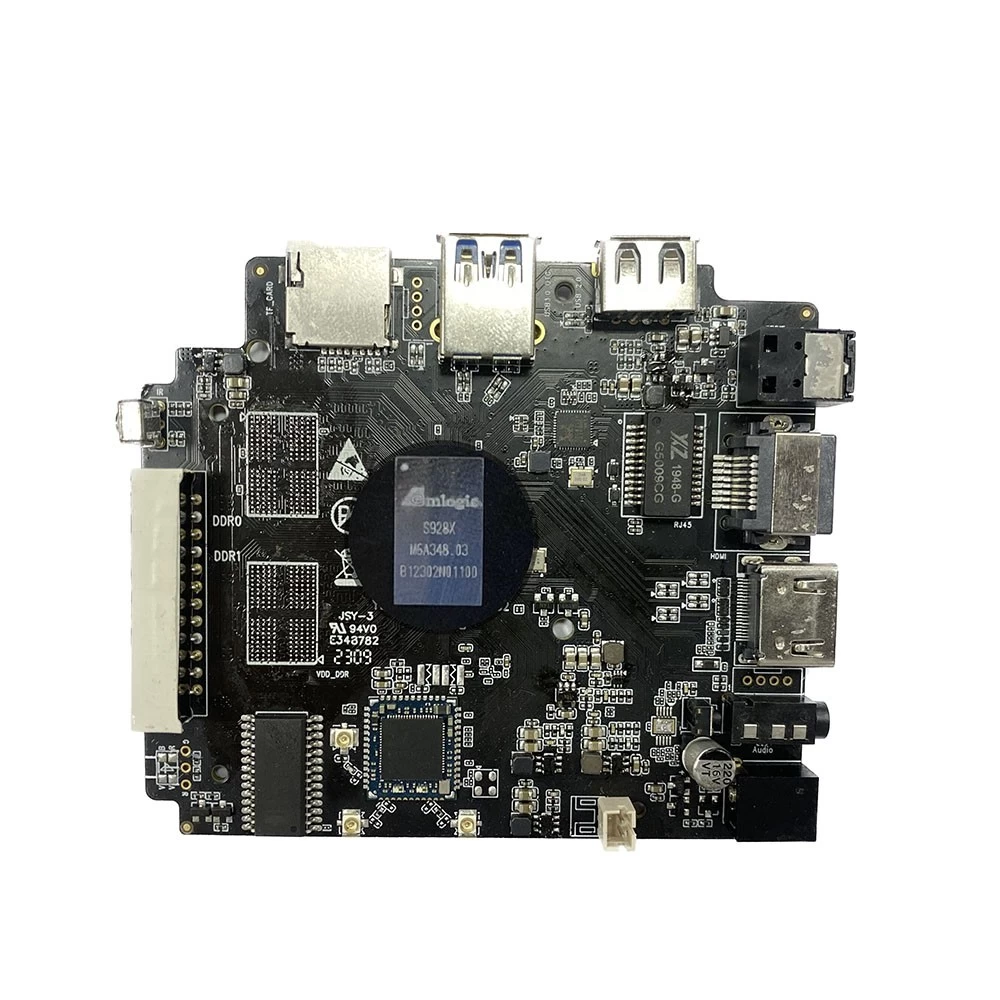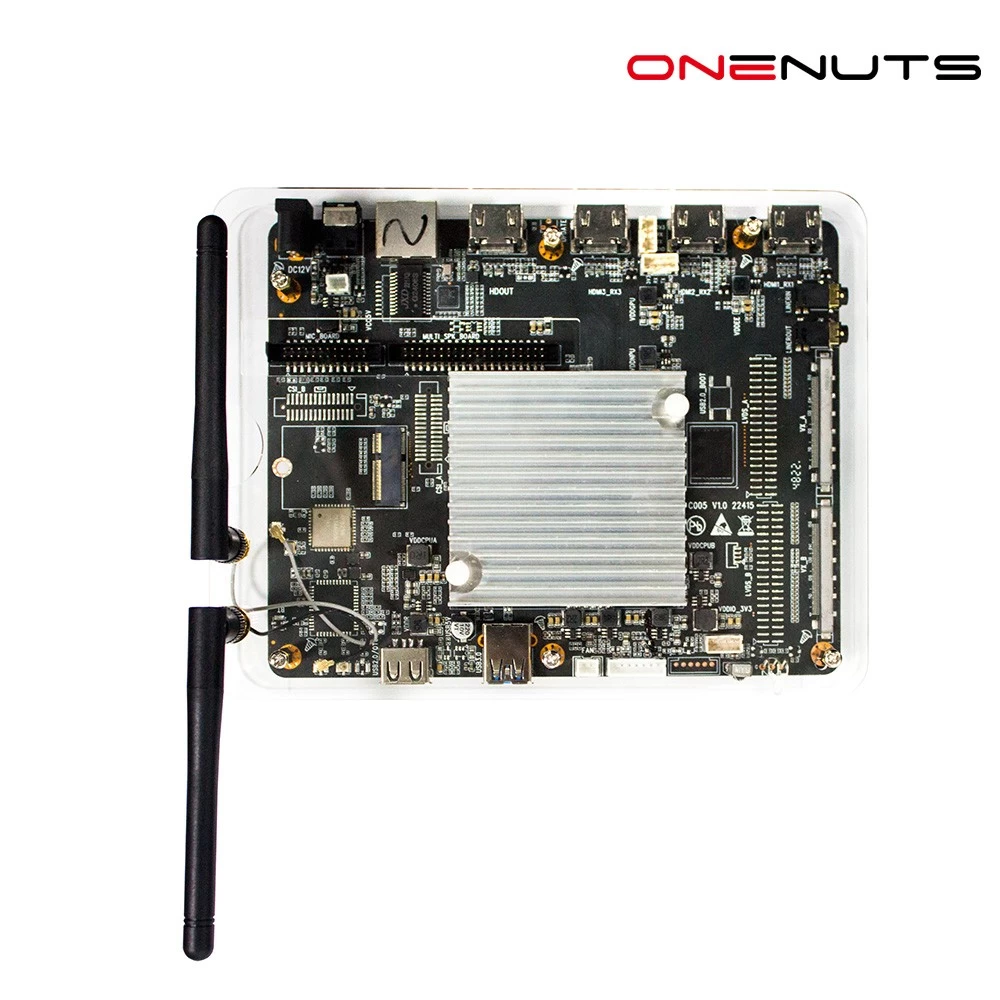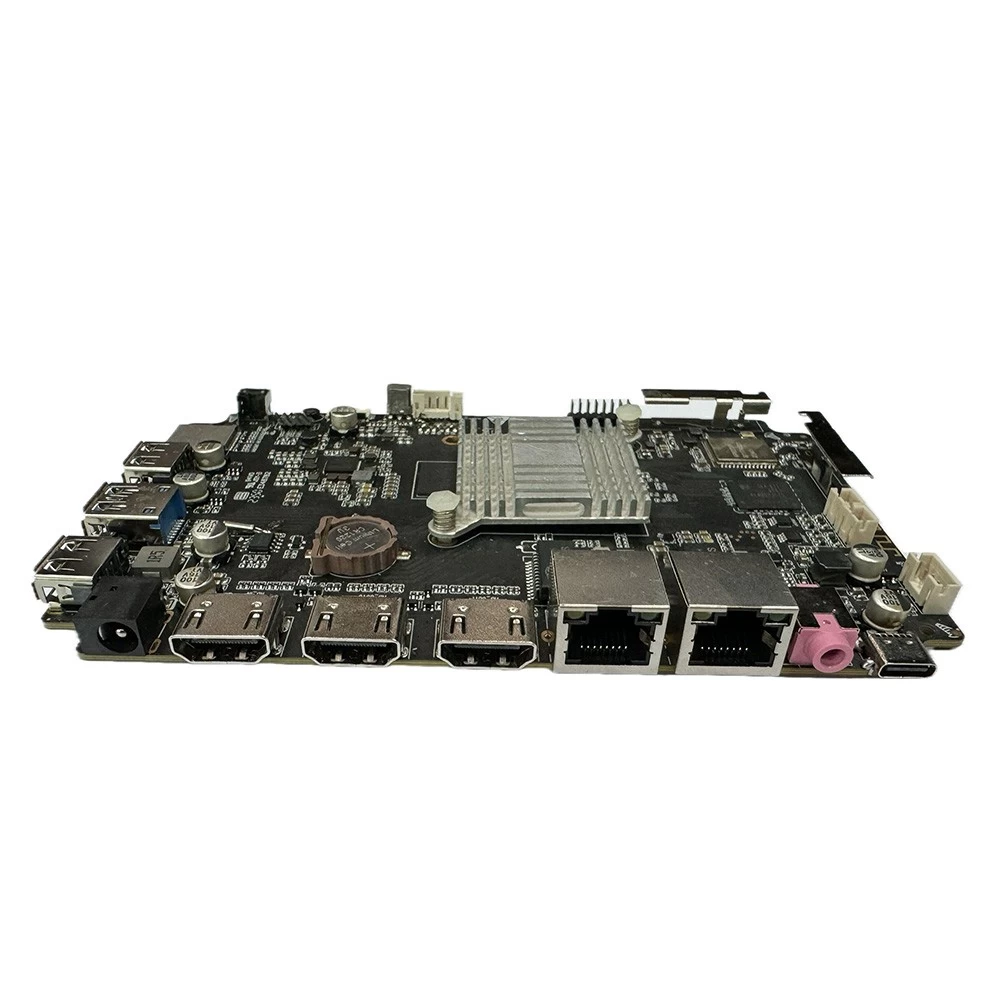The Status Quo and Future of UI for "TV Intelligent"
Tomato
www.sztomato.com
2018-06-28 15:26:59
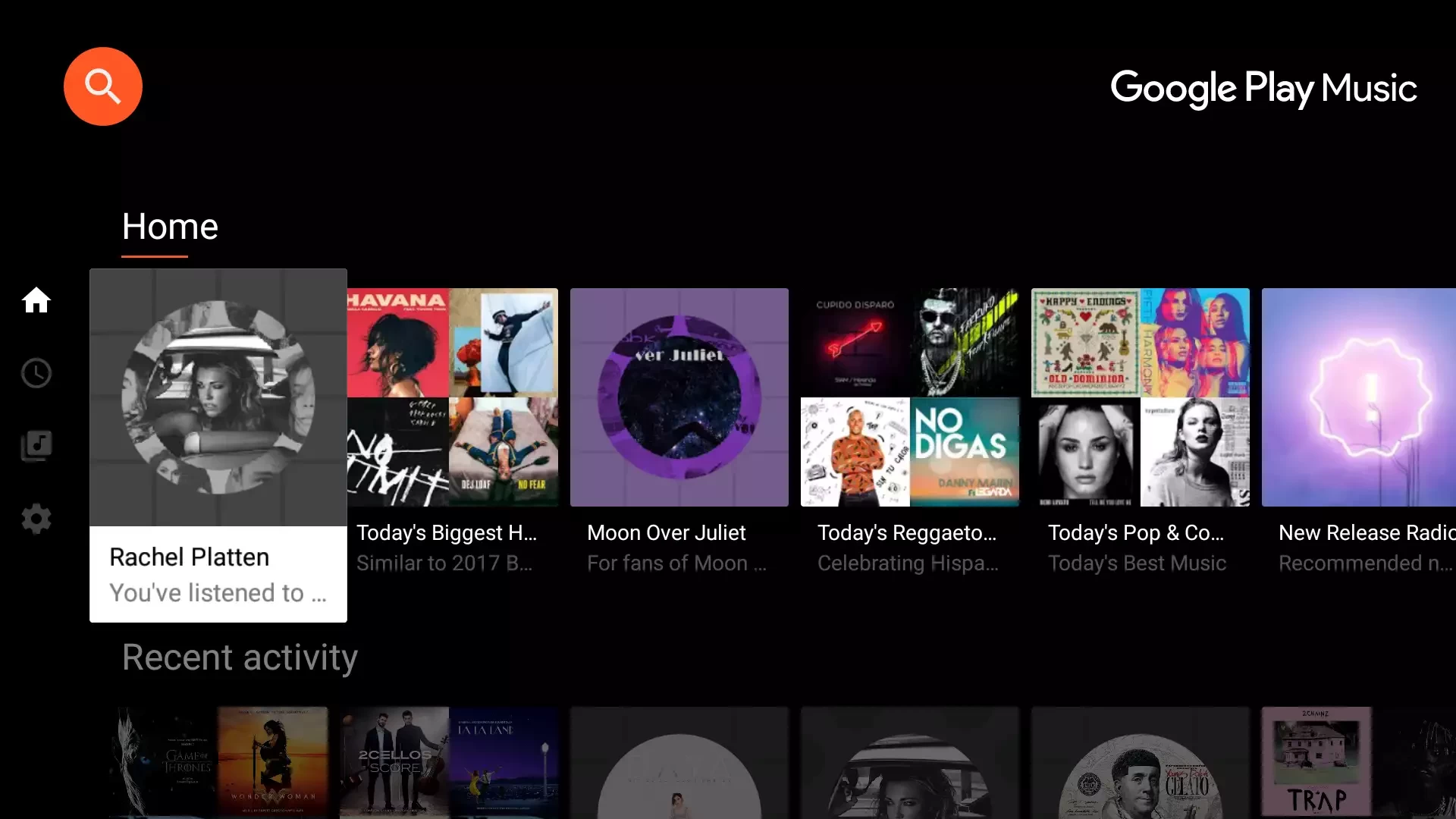
The Status Quo and Future of UI for "TV Intelligent"
Android is a free and open-source operating system based on Linux. It is mainly used on mobile devices such as smart phones and tablets. It is led and developed by Google and Open Mobile Alliance. The smart TV Android platform has entered the connected TV field and will improve the shortcomings of the original connected TV mode. In particular, the app store model will attract different types of copyright holders to networked television services and encourage more consumers to purchase connected TVs.
Android TV
As everyone knows, the current television is changing towards "4K." Whether this is the only opportunity to increase the resolution or to promote the change of the television itself will result in great changes in the production of goods. In fact, almost all TV manufacturers are arguing that "this will be a great opportunity to change televisions vigorously."
Current usage specifications for Android TV. The communication port on the TV is very rich, I guess it will have strong connection with smart phones, etc.
The key here is that Android TV pursues the standardization of corresponding ports, namely simplicity. In any case, there is no difficulty in actual equipment. In fact, if this part of the development is carried out by an LSI vendor for the SoC and the port, and sold to various manufacturers, the manufacturer of the product will not be so troublesome. However, when each manufacturer is developed separately, the problems of interchangeability between each other are likely to arise. In the case of a remote controller, since the "remote control operation API" used inside each device is different, the remote controller program between device manufacturers is also very messy and difficult to unify. Google’s claim is to use Android TV to focus on solving such problems. Considering that these are the criticisms on smartphones and tablets, it is only natural that such measures should be taken. And of course, there is the same problem with APP.
Developing smart TVs and running APPs on TVs has always been a challenge that R&D personnel have tried for a long time, but it can only be said that the status quo is not optimistic. The development of a "dedicated APP" for the production of televisions for their own companies will in turn have problems with the popularity of the platform. Therefore, the use of WEB standard technology for TVs and the use of HTML5 and Flash as "WEB APP" are already mainstream. Because doing so can obscure the problem of development efficiency to some extent. As a result, more TVs are now equipped with HTML5 browsers and try to derive more possible features
However, as far as the status quo is concerned, it is hard to say that this technology has been well utilized. When considering a PC or a smart phone, it is easy to think of making the TV “also have a browser on a usable OS or use a TV as a program”. However, the status quo is not the case. It is closer to "in the TV as an independent device, the browser and other programs exist together". As a result, the resources available to the browser are quite limited, and the operating speed is also in a disadvantageous situation. Therefore, it takes a lot of time to switch functions, and it is also difficult to run these two functions at the same time. In smart phones with resourcefulness, the so-called "negative procedures" will be the dominant factor in terms of function and speed. As a result, a similar situation will occur in the development of televisions.
Android TV finally uses "Android L", so programs developed for Android L can also be easily converted or adapted to TV-oriented programs. Although it is relatively difficult to use a touch UI program on a mobile phone to move to a TV as it is, the programs, music programs, and games used by the VOD should all be "easy to fit." At this point, "this is Android" will become a key element, which is part of Google's repeated emphasis. In the above-mentioned keynote speeches, trial videos of VOD programs such as YouTube, music programs, and games were displayed.
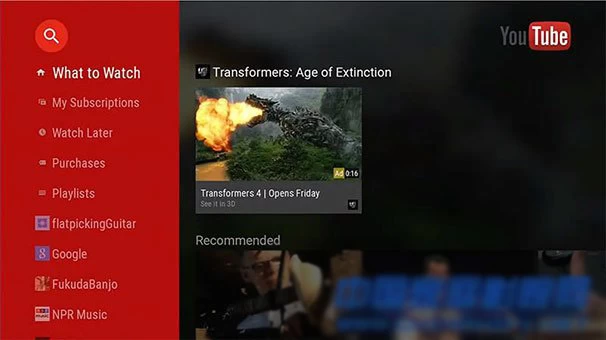
YouTube. Although software running on Android TV may also have game programs, most of them will be centered on this "software of multimedia series."
Easy operation" Android TV has a far cry from smartphone values
Google does not intend to use "applying APP" as the main axis of Android TV. On the contrary, APP is just an additional element. Like smart phones and tablets, it is not set as the main axis of a function. Including this point, there have been too many differences between Google TV and 3-4 years ago. The first is to complete the specialization of the "simple TV experience".
Since Google TV uses "Google's search function in TVs" as the main axis, it is more often necessary to use a dedicated keyboard. In addition, the status of the mouse displayed on the touch panel operation screen is also not small. But Android TV is different. Only the "digital cross key + decision key + Home + Back" on the very small operating system, deliberately abandon the "menu key and cross keys."
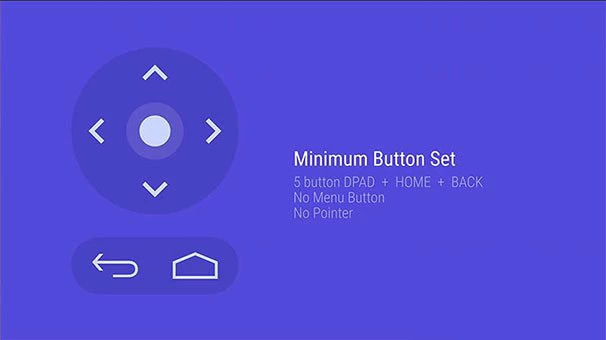
The operation of Android TV is based on "easy", and the remote control of the traditional TV will be reduced to the button in the above figure.

Definitively "does not use a touch screen," which is also a way to maintain a certain distance from the values held by smartphones and tablets.
In the era of Google TV, TV has been promoted as a "use of current IT technology props." From this, it is also more desirable for users to "subjectively and actively use their functions." However, in Android TV, more often referred to as "Leanback", this "Leanback" refers to a relaxed posture on the sofa, that is, different from other smart phones such as "subjective trends". Use method.
In the keynote speech, Google's UI developer Matias Duarte quoted the following sentence. "When your butt hits the sofa, you lose 20 IQ point." (When your ass is on the sofa, your IQ is reduced by 20) Although this statement is a bit indecent, it is indeed the case. No matter who it is, when the whole person lazily lies on the couch, he will not think about it seriously.
It is precisely because of this idea that we have tried our best to grasp the core functions in the TV experience of Android TV. Using the cross keys to operate the menu interface and icons, etc., although the use of such a menu interface configuration does not give a fresh impression, but it can ensure that most people can use it skillfully. The product does not anticipate the use of WEB or complex operations. The use of sound input is recommended in the search section. In the end, the input here is actually closer to quickly finding the video image you want to see.

Android TV interface. Simple interface composed of thumbnails as the basic, background can be played (live) screen
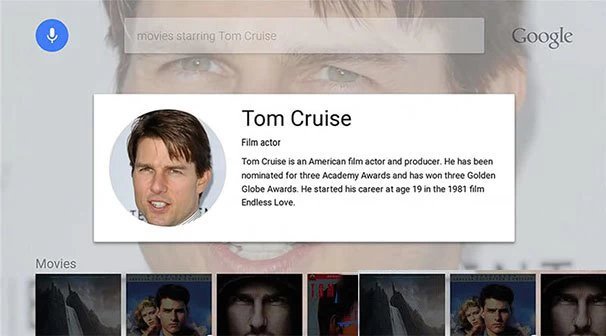
Audio search interface in Android TV. Looking at only the displayed part, although it will be closer to the sound search interface in the tablet and other devices, the search target is not WEB, but "TV show or movie" etc.
What Google wants to change most is the "complexity" of televisions. TVs that have multiple program selections and channel inputs are constantly on the go in everyday use, but now they have also joined IP-based programming. As a result, Android TV will also be dedicated to perfect integration of multiple input sources on the TV, eliminating the use of input switching or multiple remote controls, and seeking a simpler and faster method of operation.
In fact, what is surprising is the directionality of "simplification of program source switching", which is the same as that of Google TV. It is only the "search window" that is used as the entry point at this time. When Google TV searches for a show name or performer name, it will generate a philosophical model for finding the desired program in parallel from EPG to IPTV and even video programs. Although it is very conceptual, the input of characters or the "search keyword for similar objects" is not very suitable for TV usage. Although Android TV adopts a more secure route, the OS has been integrated into a framework of "relying on live broadcasting without associating more sources", thereby effectively avoiding the complexity of television sets.

TV broadcast screen in Android TV
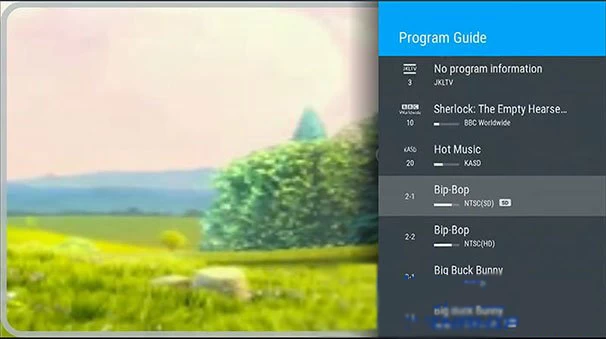
The input channel and content are integrated and displayed

Inputs given to Android TV are all "integrated," and the goal is not to think about the smooth use of different program selection or input systems.
Since the goal is to "solve the complexity of the television", it cannot be made like a smartphone or tablet device. As mentioned above, the operation of the Android APP is not the main thrust of the Android APP. Although the hardware specifications are also limited to some extent, the contents are completely different from the smart phones and tablets. Actually, video images and sound files are not limited to the use of software decoding on the OS, but can also be played on hardware devices that exist in other ways like traditional televisions, and then they are accessible on the OS. The form of display can be used as an aid. Therefore, although the UI of Android TV will have great differences, it is relatively easy to develop the same quality as today's high-end products in terms of image and sound quality.
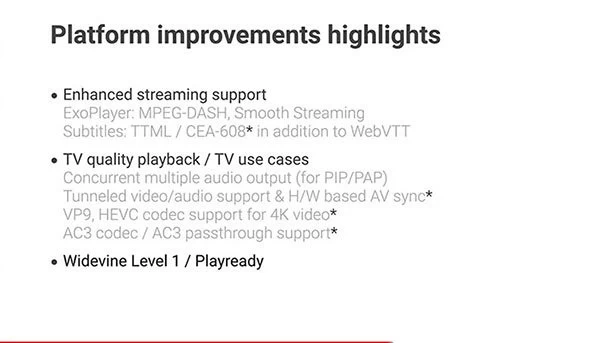
The auxiliary TV function of Android TV, in addition to supporting the latest integration functions such as HEVC and 4K, enhanced support for AV content display on hardware is also attracting attention.
When the frameworks of PCs, smart phones, tablets, and even game consoles are transferred to televisions, the problems are "guarantee of quality" and "how and how to complete this work." Although it will be easier to add post-regulation development to PCs and tablets, the "misappropriation method" currently under development will appear to be difficult to use when both are used together. For Android TV, such technology integration problems do exist. However, at least in terms of display quality, we can imagine how much more or less can be perfectly inherited. On this point, that is, after Google TV development & practical development, Google learned and imported parts from TV manufacturers.
Although this is the author's conjecture, it is likely that even with the same Android TV products, it will result in the completion of the "TV set" with the focus on quality and sound quality depending on the manufacturer or product. big difference. Because the "method and method" is the most important part, the difference between this method and the current smart phone & tablet will be much different.
The simplicity and appearance of the interface is not only the pursuit of the designer, but also the goal and the use mode that our users are pursuing. The simple interface analysis design mode of ui above is Android TV.
Android TV
As everyone knows, the current television is changing towards "4K." Whether this is the only opportunity to increase the resolution or to promote the change of the television itself will result in great changes in the production of goods. In fact, almost all TV manufacturers are arguing that "this will be a great opportunity to change televisions vigorously."
Current usage specifications for Android TV. The communication port on the TV is very rich, I guess it will have strong connection with smart phones, etc.
The key here is that Android TV pursues the standardization of corresponding ports, namely simplicity. In any case, there is no difficulty in actual equipment. In fact, if this part of the development is carried out by an LSI vendor for the SoC and the port, and sold to various manufacturers, the manufacturer of the product will not be so troublesome. However, when each manufacturer is developed separately, the problems of interchangeability between each other are likely to arise. In the case of a remote controller, since the "remote control operation API" used inside each device is different, the remote controller program between device manufacturers is also very messy and difficult to unify. Google’s claim is to use Android TV to focus on solving such problems. Considering that these are the criticisms on smartphones and tablets, it is only natural that such measures should be taken. And of course, there is the same problem with APP.
Developing smart TVs and running APPs on TVs has always been a challenge that R&D personnel have tried for a long time, but it can only be said that the status quo is not optimistic. The development of a "dedicated APP" for the production of televisions for their own companies will in turn have problems with the popularity of the platform. Therefore, the use of WEB standard technology for TVs and the use of HTML5 and Flash as "WEB APP" are already mainstream. Because doing so can obscure the problem of development efficiency to some extent. As a result, more TVs are now equipped with HTML5 browsers and try to derive more possible features
However, as far as the status quo is concerned, it is hard to say that this technology has been well utilized. When considering a PC or a smart phone, it is easy to think of making the TV “also have a browser on a usable OS or use a TV as a program”. However, the status quo is not the case. It is closer to "in the TV as an independent device, the browser and other programs exist together". As a result, the resources available to the browser are quite limited, and the operating speed is also in a disadvantageous situation. Therefore, it takes a lot of time to switch functions, and it is also difficult to run these two functions at the same time. In smart phones with resourcefulness, the so-called "negative procedures" will be the dominant factor in terms of function and speed. As a result, a similar situation will occur in the development of televisions.
Android TV finally uses "Android L", so programs developed for Android L can also be easily converted or adapted to TV-oriented programs. Although it is relatively difficult to use a touch UI program on a mobile phone to move to a TV as it is, the programs, music programs, and games used by the VOD should all be "easy to fit." At this point, "this is Android" will become a key element, which is part of Google's repeated emphasis. In the above-mentioned keynote speeches, trial videos of VOD programs such as YouTube, music programs, and games were displayed.

YouTube. Although software running on Android TV may also have game programs, most of them will be centered on this "software of multimedia series."
Easy operation" Android TV has a far cry from smartphone values
Google does not intend to use "applying APP" as the main axis of Android TV. On the contrary, APP is just an additional element. Like smart phones and tablets, it is not set as the main axis of a function. Including this point, there have been too many differences between Google TV and 3-4 years ago. The first is to complete the specialization of the "simple TV experience".
Since Google TV uses "Google's search function in TVs" as the main axis, it is more often necessary to use a dedicated keyboard. In addition, the status of the mouse displayed on the touch panel operation screen is also not small. But Android TV is different. Only the "digital cross key + decision key + Home + Back" on the very small operating system, deliberately abandon the "menu key and cross keys."

The operation of Android TV is based on "easy", and the remote control of the traditional TV will be reduced to the button in the above figure.

Definitively "does not use a touch screen," which is also a way to maintain a certain distance from the values held by smartphones and tablets.
In the era of Google TV, TV has been promoted as a "use of current IT technology props." From this, it is also more desirable for users to "subjectively and actively use their functions." However, in Android TV, more often referred to as "Leanback", this "Leanback" refers to a relaxed posture on the sofa, that is, different from other smart phones such as "subjective trends". Use method.
In the keynote speech, Google's UI developer Matias Duarte quoted the following sentence. "When your butt hits the sofa, you lose 20 IQ point." (When your ass is on the sofa, your IQ is reduced by 20) Although this statement is a bit indecent, it is indeed the case. No matter who it is, when the whole person lazily lies on the couch, he will not think about it seriously.
It is precisely because of this idea that we have tried our best to grasp the core functions in the TV experience of Android TV. Using the cross keys to operate the menu interface and icons, etc., although the use of such a menu interface configuration does not give a fresh impression, but it can ensure that most people can use it skillfully. The product does not anticipate the use of WEB or complex operations. The use of sound input is recommended in the search section. In the end, the input here is actually closer to quickly finding the video image you want to see.

Android TV interface. Simple interface composed of thumbnails as the basic, background can be played (live) screen

Audio search interface in Android TV. Looking at only the displayed part, although it will be closer to the sound search interface in the tablet and other devices, the search target is not WEB, but "TV show or movie" etc.
What Google wants to change most is the "complexity" of televisions. TVs that have multiple program selections and channel inputs are constantly on the go in everyday use, but now they have also joined IP-based programming. As a result, Android TV will also be dedicated to perfect integration of multiple input sources on the TV, eliminating the use of input switching or multiple remote controls, and seeking a simpler and faster method of operation.
In fact, what is surprising is the directionality of "simplification of program source switching", which is the same as that of Google TV. It is only the "search window" that is used as the entry point at this time. When Google TV searches for a show name or performer name, it will generate a philosophical model for finding the desired program in parallel from EPG to IPTV and even video programs. Although it is very conceptual, the input of characters or the "search keyword for similar objects" is not very suitable for TV usage. Although Android TV adopts a more secure route, the OS has been integrated into a framework of "relying on live broadcasting without associating more sources", thereby effectively avoiding the complexity of television sets.

TV broadcast screen in Android TV

The input channel and content are integrated and displayed

Inputs given to Android TV are all "integrated," and the goal is not to think about the smooth use of different program selection or input systems.
Since the goal is to "solve the complexity of the television", it cannot be made like a smartphone or tablet device. As mentioned above, the operation of the Android APP is not the main thrust of the Android APP. Although the hardware specifications are also limited to some extent, the contents are completely different from the smart phones and tablets. Actually, video images and sound files are not limited to the use of software decoding on the OS, but can also be played on hardware devices that exist in other ways like traditional televisions, and then they are accessible on the OS. The form of display can be used as an aid. Therefore, although the UI of Android TV will have great differences, it is relatively easy to develop the same quality as today's high-end products in terms of image and sound quality.

The auxiliary TV function of Android TV, in addition to supporting the latest integration functions such as HEVC and 4K, enhanced support for AV content display on hardware is also attracting attention.
When the frameworks of PCs, smart phones, tablets, and even game consoles are transferred to televisions, the problems are "guarantee of quality" and "how and how to complete this work." Although it will be easier to add post-regulation development to PCs and tablets, the "misappropriation method" currently under development will appear to be difficult to use when both are used together. For Android TV, such technology integration problems do exist. However, at least in terms of display quality, we can imagine how much more or less can be perfectly inherited. On this point, that is, after Google TV development & practical development, Google learned and imported parts from TV manufacturers.
Although this is the author's conjecture, it is likely that even with the same Android TV products, it will result in the completion of the "TV set" with the focus on quality and sound quality depending on the manufacturer or product. big difference. Because the "method and method" is the most important part, the difference between this method and the current smart phone & tablet will be much different.
The simplicity and appearance of the interface is not only the pursuit of the designer, but also the goal and the use mode that our users are pursuing. The simple interface analysis design mode of ui above is Android TV.

